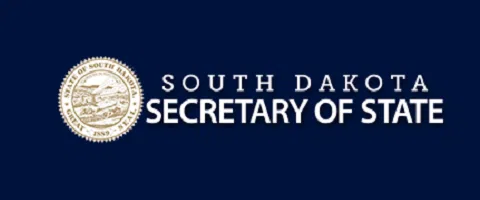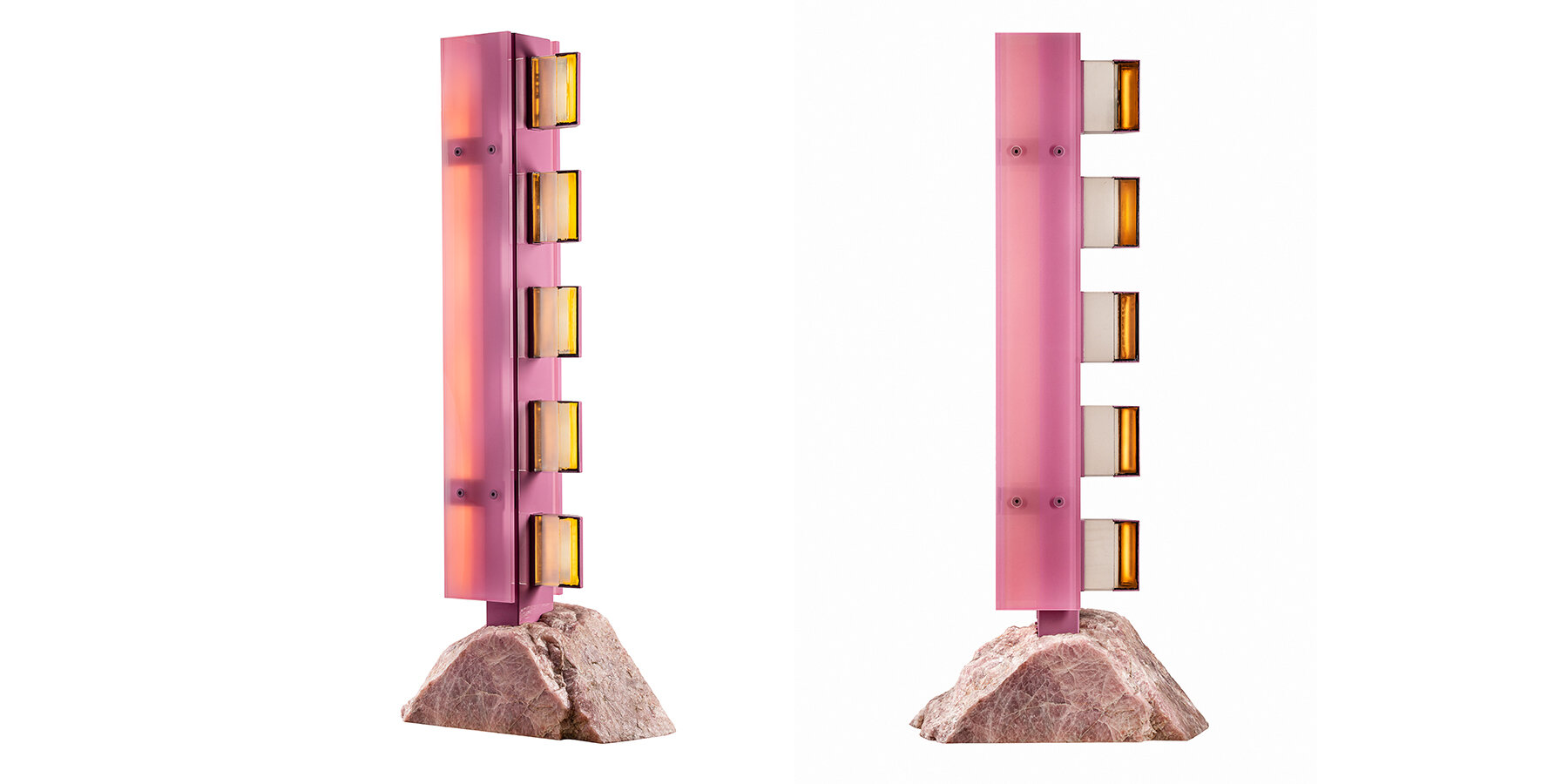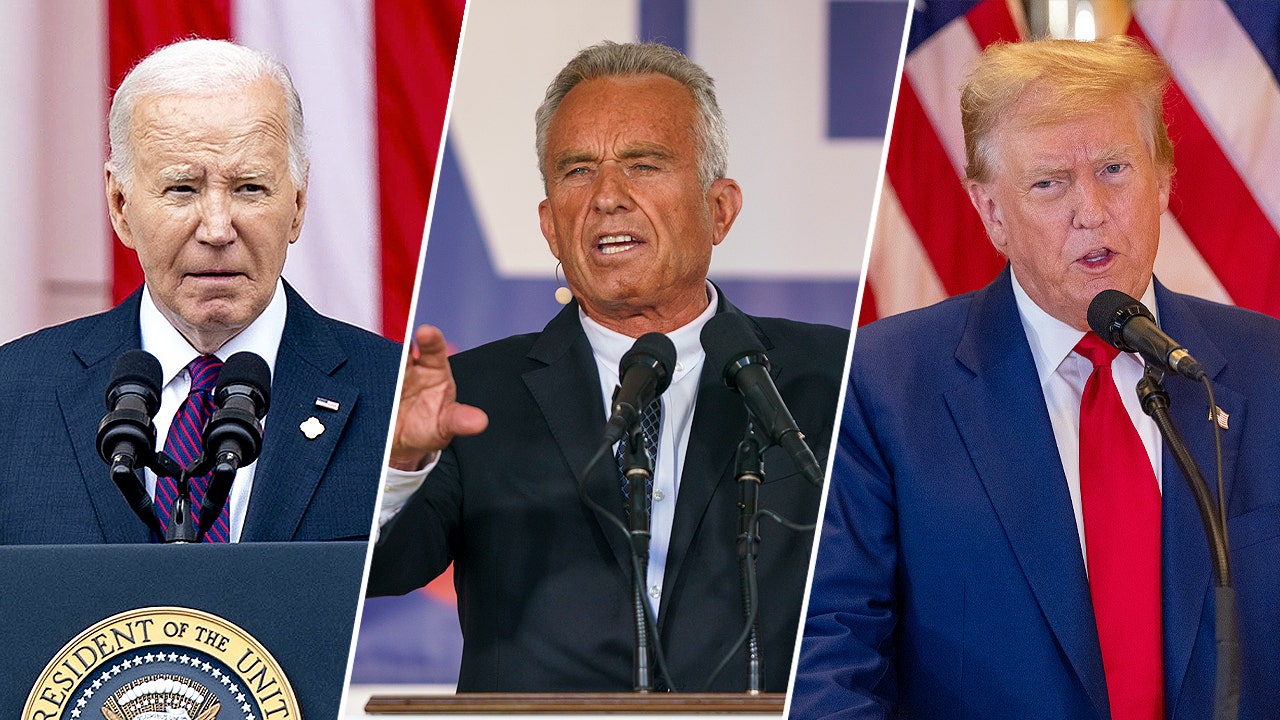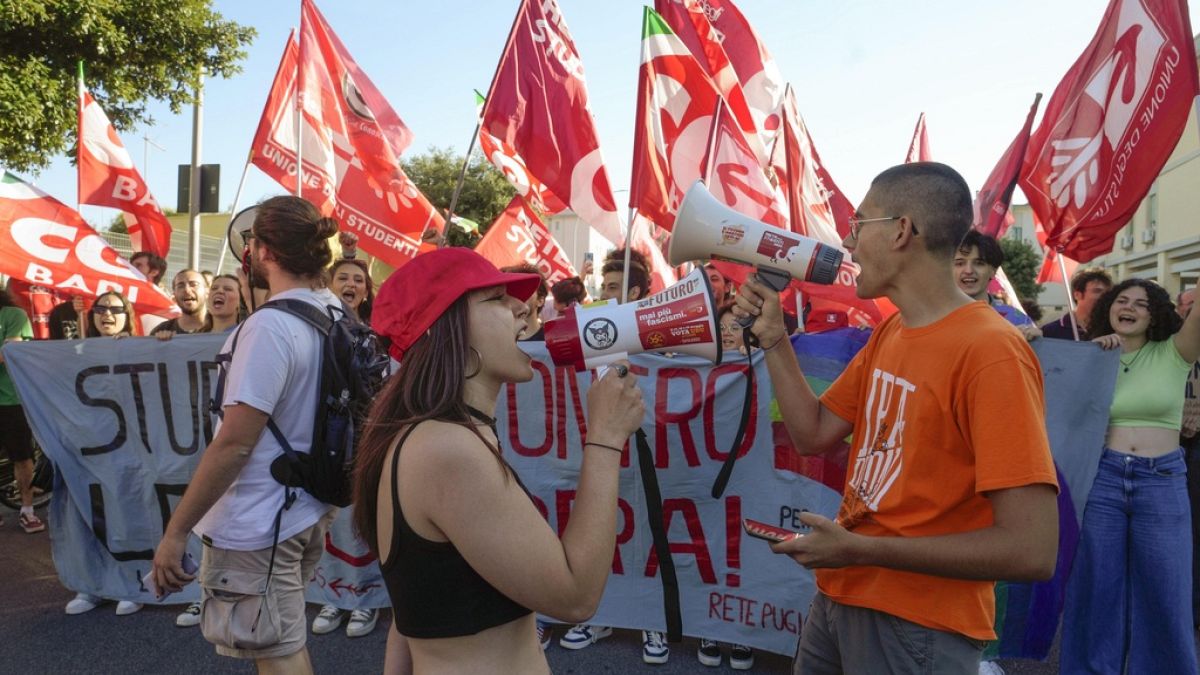South Dakota
‘Top two’ primary election measure makes South Dakota’s November ballot

MAY 22, 2024:
South Dakota Secretary of State Monae L. Johnson announces that a petition submitted for an initiated constitutional amendment was validated and filed by her office Tuesday (May 21, 2024). This ballot question would amend the Constitution of South Dakota to establish top-two primary elections. The title for the ballot question will be Constitutional Amendment H, and it will appear on the 2024 General Election ballot on November 5, 2024.
An initiated amendment currently requires 35,017 valid signatures in order to appear on the ballot. As outlined in SDCL § 2-1-16, the Secretary of State’s Office conducted a random sample of the petition signatures and found 84.47 percent to be valid. Additional part-time staff was hired to assist with the validation process. Based on the results of the random sample, 36,350 signatures were deemed valid.
Upon the filing of an initiated amendment, any citizen may challenge the Secretary of State’s validation of the initiated amendment under SDCL § 2-1-17.1. Citizens challenging the validation must submit an original, signed affidavit listing out each specific deficiency to the Secretary of State’s Office no more than 30 days after validation. Affidavits submitted electronically will not be accepted. For this initiated amendment, the deadline to file a challenge is Thursday, June 20, 2024, at 5:00 pm central time.
More information on specific ballot questions can be found on the Secretary of State’s website: https://sdsos.gov/elections-voting/upcoming-elections/general-information/2024/2024-ballot-questions.aspx.
MAY 7, 2024:
Secretary of State Monae L. Johnson’s office received petitions this afternoon for an initiated measure legalizing the recreational use, possession, and distribution of marijuana. If validated and certified, the ballot question will appear on the general election ballot on November 5, 2024. The deadline to submit ballot question petitions to the Secretary of State is Tuesday, May 7, at 5:00 p.m. central time.
Petitions will be reviewed by the Secretary of State’s office in the order in which they were received. Below is a chart indicating the order of submission:
In order to qualify to be placed on the 2024 general election ballot, an Initiated Measure requires 17,508 valid signatures and a Constitutional Amendment requires 35,017 valid signatures. As outlined in South Dakota Codified Law 2-1-16 and 2-1-17, the Secretary of State’s office will now conduct a random sampling of the petition signatures to determine the validity.
Ballot measures submitted to the Secretary of State’s office previously had a deadline for submission which was one year out from the general election. After a law change in 2023, ballot measure petitions have until the first Tuesday in May to file. The Secretary of State’s office has until August 13, 2024, to finish validating petitions.
Individuals who wish to have their name withdrawn from a ballot measure petition must submit written notification to the Secretary of State’s office any time before the petition from which the individual is submitting is filed and certified for placement on the general election ballot.
MAY 6, 2024:
Secretary of State Monae L. Johnson’s office received petitions Monday afternoon (May 6, 2024) for an initiated amendment to the South Dakota Constitution establishing top-two primary elections. If validated and certified, the ballot question will appear on the general election ballot on November 5, 2024. The deadline to submit ballot question petitions to the Secretary of State is Tuesday, May 7, at 5:00 p.m. central time.
Petitions will be reviewed by the Secretary of State’s office in the order in which they were received. Below is a chart indicating the order of submission:

In order to qualify to be placed on the 2024 general election ballot, an Initiated Measure requires 17,508 valid signatures and a Constitutional Amendment requires 35,017 valid signatures. As outlined in South Dakota Codified Law 2-1-16 and 2-1-17, the Secretary of State’s office will now conduct a random sampling of the petition signatures to determine the validity.
Ballot measures submitted to the Secretary of State’s office previously had a deadline for submission which was one year out from the general election. After a law change in 2023, ballot measure petitions have until the first Tuesday in May to file.
Individuals who wish to have their name withdrawn from a ballot measure petition must submit written notification to the Secretary of State’s office any time before the petition from which the individual is submitting is filed and certified for placement on the general election ballot.
UNDATED (AP)- Supporters of a “top two” primary election system in South Dakota that would replace the current partisan process with one open to all voters have submitted thousands more petition signatures than required to bring a vote this fall on their ballot initiative.
On Monday (May 6, 2024), South Dakota Open Primaries sponsors said they submitted petitions with 47,000 signatures to Secretary of State Monae Johnson’s office. The measure group needs 35,017 valid signatures to make the November ballot. Johnson’s office has until Aug. 13 to validate the measure, a proposed constitutional amendment.
Under South Dakota’s current primary election system, candidates in gubernatorial, congressional, legislative and county races compete in a partisan primary. The measure would allow all candidates to compete against each other in one primary, and the top two vote-getters in each race or for each seat would advance to the general election. A similar measure failed in 2016.
Other states such as California and Washington have “top two” primary elections similar to the measure proposed in South Dakota.
Measure sponsor Deanna “De” Knudson, a registered Republican, said she doesn’t think the state has a fair system, in that it “excludes about half of the voters from the real race, and we just really believe that this is a fairness issue.”
Republicans control South Dakota’s Legislature and hold all statewide elected offices and congressional seats. Democrats haven’t won a statewide election since 2008, when former U.S. Sen. Tim Johnson and U.S. Rep. Stephanie Herseth Sandlin won reelection to their last terms.
South Dakota has nearly 602,000 registered voters, including 304,000 Republicans and 144,000 Democrats, but people registered as “no party affiliation” or “independent” total nearly 150,000 voters, according to online voter registration tracking.
State Republican Party Chairman and state Sen. John Wiik said he vehemently opposes the measure. He said he sees “no good coming out of it for the Republican Party.” The state GOP’s central committee unanimously opposed the measure, he said.
“I want Republicans to be able to choose the Republican candidate, and Democrats to choose the Democrat candidate,” Wiik said. “If you want to be an independent, then you’re independent of the decisions that affect your lives.”
Knudson said the measure would bring a much more competitive process and “will make sure that the winning candidate is the one most South Dakotans agree on.” She questioned the balance of power in the Legislature, where Democrats hold 11 of 105 seats, and whether that is truly reflective of voters’ will.
State Democratic Party Executive Director Dan Ahlers said the party hasn’t taken a stance on the measure. The Democratic Party allows “no party affiliation” and independent voters to vote in its primary, along with registered Democrats.
MAY 2, 2024:
The South Dakota Secretary of State’s Office has received petitions (May 1, 2024) for an initiated amendment establishing a right to abortion in the state constitution. If validated and certified, the ballot question will appear on the general election ballot on November 5, 2024. The deadline to submit ballot question petitions to the Secretary of State is Tuesday (May 7, 2024) at 5:00pm Central Time.
Petitions will be reviewed by the Secretary of State’s office in the order in which they were received. Below is a chart indicating the order of submission:

In order to qualify to be placed on the 2024 general election ballot, an Initiated Measure requires 17,508 valid signatures and a Constitutional Amendment requires 35,017 valid signatures. As outlined in South Dakota Codified Law 2-1-16 and 2-1-17, the Secretary of State’s office will now conduct a random sampling of the petition signatures to determine the validity.
Ballot measures submitted to the Secretary of State’s office previously had a deadline for submission which was one year out from the general election. After a law change in 2023, ballot measure petitions have until the first Tuesday in May to file.
Individuals who wish to have their name withdrawn from a ballot measure petition must submit written notification to the Secretary of State’s office any time before the petition from which the individual is submitting is filed and certified for placement on the general election ballot.
APRIL 25, 2024:
Secretary of State Monae L. Johnson’s office received petitions for a ballot question Wednesday (April 24, 2024). If validated and certified, the ballot question will appear on the general election ballot on November 5, 2024.
Individuals who wish to have to have their name withdrawn from a ballot measure petition must submit written notification to the Secretary of State’s office any time before the petition from which the individual is submitting is filed and certified for placement on the general election ballot.
In order to qualify to be placed on the 2024 general election ballot, an Initiated Measure requires 17,508 valid signatures and a Constitutional Amendment requires 35,017 valid signatures. As outlined in South Dakota Codified Law 2-1-16 and 2-1-17, the Secretary of State’s office will now conduct a random sampling of the petition signatures to determine the validity.
The deadline to submit ballot question petitions to the Secretary of State is May 7, at 5:00 p.m. central time.
Ballot measures submitted to the Secretary of State’s office previously had a deadline for submission which was one year out from the general election. After a law change in 2023, ballot measure petitions have until the first Tuesday in May to file. Ballot measures will be a top priority for the Secretary of State’s office, along with assisting voters and county auditors with absentee voting and questions for the June 4, 2024, Primary Election.

South Dakota
SDSU team creates plan for biodegradable grocery bags

BROOKINGS, S.D. (KELO) – A group of SDSU students are back from Kenya this week after competing for a Hult Prize — which is a global program challenging college students to solve the world’s most pressing issues.
Extraordinary things can happen inside a scientific lab. For example, a plastic film made out of soybean hulls and sustainable chemicals. The hope is that one day, it could create entire grocery bags.
“Our product, bAGgy, instead of going into landfill or ocean for 500 years in order to decompose, it takes 60 days for the plastic films to decompose,” Hunter Eide, an SDSU graduate who helped create Agri-Cycle Innovations, said.
It’s a business plan created by four students at SDSU, combined with the research of Dr. Srinivas Janaswamy and his graduate students.
“It’s going to function very similar to your regular plastic bag that for like the consumers at the end, the experience will be the same for them,” Kylie Rosenau, an SDSU student who helped create Agri-Cycle Innovations, said. “So really takes the burden of having to recycle or reuse off of them and puts it on like the manufacturers.”
They call it Agri-Cycle Innovations and it led this team to Kenya for the second round of an international contest. They were picked as one of 360 teams out of 10,000 around the world to advance for the Hult Prize.
“I always like believed in our team and what we put together, but it’s like when you know there’s that many people and so many incredible ideas coming into this, it’s not like we were over-confident by any means,” Rosenau said. “So, it was really just kind of confirmed that, yeah, we’ve put something great together.”
Unfortunately, the SDSU team did not win the one million dollar grand prize, but they are proud of what they created.
“Oftentimes, it seems like the world is in a lot of crisis, there’s a lot of bad things, but you know, what can we as young and the next generation do to help positively change,” Eide said. “And continue to do it in a way to generate business and the economy in order to go forward with that.”
The students say soybean hulls were picked because it’s the part of the soybean that isn’t used for food or animal feed. So, it can be used without farmers having to plant more crop in order to make the bags.
South Dakota
Hot topics in agriculture discussed at South Dakota Governor’s Agricultural Summit

HURON, S.D. — The South Dakota Governor’s Agricultural Summit was held June 12 and 13 at the South Dakota State Fairgrounds in Huron, South Dakota. Industry and business leaders from across the state came together to discuss pressing issues within agriculture and shed some light on the state’s No. 1 industry.
“We do (agriculture) better than anybody else in the world and we do it better in South Dakota than anybody else in the country. We have, in South Dakota, more cows per people than any other state. So that’s a good thing to maintain,” South Dakota Governor Kristi Noem told the audience. “We like that about 95% of our South Dakota farms are still family owned and family operated, which is something I’m very proud of. And ag contributes over $32 billion to our economy in our state. About 30% of our economic output comes from the agriculture industry. When ag prospers, all of South Dakota prospers.”
Noem made an appearance to present the 2024 Governor’s Ag Ambassador award to this year’s recipient and longtime WNAX radio newsman, Jerry Oster, from Yankton, South Dakota. Noem also highlighted the importance of the work that goes into agricultural policy and how that affects the state’s farmers and ranchers.
“I’ve been working on policy for over 30 years and for me, it’s been a very different type of discussion than I think some people have when they look at ag policy. From my time first serving on committees and working on commissions in Washington, D.C., in my twenties, it’s been a national security issue,” Noem said. “One of the things I would hope that when we leave here, we remember the bigger goal is that it’s about how we feed the world and that’s important. We also have our policies, our programs, farm bills, in place to keep a safety net out there so that we have a lot of farmers and ranchers that can be successful and keep our No. 1 industry strong and safe.”
Beth Thompson, South Dakota’s state veterinarian and executive secretary of the South Dakota Animal Industry Board, presented an update on the highly pathogenic avian influenza, highlighting the impact on both poultry and dairy farms.
Kennedy Tesch / Agweek
“In South Dakota, it’s been some months since we’ve seen highly pathogenic avian influenza in poultry, which is good because we just made it through the spring migratory season,” Thompson said. “Unfortunately, we are seeing avian influenza in dairy and we’ve had five sites here in the state of South Dakota. The animal industry board is working very closely with those dairy farmers and their veterinarians and hopefully, we’ll be at the end of the cases and move forward into the summer.”
Thompson said in mitigating spreading of the virus, biosecurity becomes king.
“Biosecurity is important because you want to keep whatever disease you may have on your site, on your site and not share it with your neighbors,” she said. “But you also want to keep anything off your site, too. So things like watching your visitors, making sure that nobody’s coming on your site unless you know about it, making sure that you’re watching your animals and working with your veterinarian very closely in case you see anything going on with your herd or flock.”

Kennedy Tesch / Agweek
The impacts of trade on South Dakota’s economy fueled a panel discussion led by Luke Lindberg, president and CEO of South Dakota Trade, with Jerry Schmitz, executive director of South Dakota Soybean, Dennis Harstad, general manager of Houdek, and Cesar Garcia Arevalo, export sales and marketing manager for Advanced Sunflower, participating.

Kennedy Tesch / Agweek
“South Dakota is a prolific exporter of agricultural products. It’s $5 billion a year, roughly speaking, and our state only exports about $7 billion of goods and services. So agriculture is definitely our No. 1 export product. When we look at it in comparison to states all across the country, we’re actually the second highest per capita ag exporter,” Lindberg said. “A lot of those markets are overseas, 96% of the world’s population lives outside the United States, 4% live in the United States. So those are the markets we’re trying to position them for and find ways to sell their products.”
While businesses and organizations work to secure new markets for agricultural products, Elaine Kub, a market economist based in South Dakota, said that going into 2024 and 2025, the outlook is “looking a little less sunny this year than it has in some of the previous years.”
While Kub pointed out that the frustrating part about markets is that producers really have no control over the prices, she mentioned some steps they can take to get through this period of low markets.

Kennedy Tesch / Agweek
“They have to make decisions for their own costs of production, and we can try and bring that down. Land prices are a big piece of that and interest rates, how much interest you’re paying for land or any other input is a big piece of that. Of course, we don’t have any control over interest rates, but we have control over spending patterns or borrowing patterns, she said. “Operational decisions like that can make a difference and also marketing — you can be kind of smart about marketing grain ahead of time and seasons of the year that tend to typically have higher seasonal prices than those harvest time prices.”
Despite the low commodity prices, Hunter Roberts, Secretary of the Department of Agriculture and Natural Resources, remains optimistic.

Kennedy Tesch / Agweek
“We have plenty of challenges like every state, every industry, but agriculture itself is in a great spot,” Roberts said. “We need to continue to move forward. Commodity price wise, we’re down a little bit but moisture wise, we’re looking pretty good. We have a good crop in the ground, so I’m very optimistic about the future of agriculture. I think things are looking up.”
The Governor’s Ag Summit continued on June 13 for day two with presentations on the history of the South Dakota State Fair, touring a nearby Spink Hutterite colony and Kasemeister Creamery and a concert in the DEX building on the fairgrounds featuring country music artist, Thomas Rhett.
South Dakota
North Dakota Is Getting A 4th Interstate Highway!

Just about everybody who has spent some time in North Dakota or has lived here knows about Interstate 94 and Interstate 29.
I-94 cuts across the state from the Montana border through Dickinson, Bismarck, Jamestown, and finally Fargo. From there it takes a southeast direction through Minnesota and eventually into Minneapolis-St. Paul, and then heads east across Wisconsin.
I-29 starts at the Canadian border and runs straight south through Grand Forks, Fargo, Wahpeton, and continues through eastern South Dakota and beyond.
Oh, did you know those interstates that end with an odd number go North and South, and interstates that end with an even number (you guessed it) move east and west? A little trivia nugget for you.
We only have two interstate highways in North Dakota correct?
That’s what I thought living in North Dakota just about all my life. I-29 and I-94. NOPE!
I was surprised when a co-worker pointed out to me shortly after I moved to Bismarck 5 years ago, that we have a 3rd interstate highway in the state. I was like, “Say what?” Yep, Interstate 194. So unknown, there’s not even a sign erected for it. It is only three and a half miles long.
I-194 shows up on the navigation on my truck. Mic drop. Mind blown.
According to Interstate-Guide.com, I-194 I appeared as a full Interstate on the 1982 North Dakota Official Highway Map. It was omitted by the 2002 edition but reappeared by 2007 as a business route. The 2015-16 map again showed I-194 with a tricolor shield but with non-Interstate line work. Kind of confusing I know, but I urge you to check your navigation on your vehicle and see if it shows up like on mine.
I-194 runs from the bridge that goes over Memorial Highway in Mandan until reaches I-94 in Mandan.
Now, North Dakota is reportedly getting a 4th interstate highway. Introducing I-27!
I-27 will run through western North Dakota, which is currently Highway 85, otherwise known as the Theodore Roosevelt Expressway. Cities that are located along this route include Bowman, Amidon, Belfield, Watford City, and over to Williston.
No timetable has been established for the construction of this project but Congress did earmark the funds back in 2022.
This will certainly help out the oil industry, farmers, and ranchers, and hopefully make this stretch of highway safer with 4 lanes for the entire stretch.
I-27 is already in Texas and will work its way up to North Dakota eventually.
Pac-Man Facts: 40 Easily Digestible Bits of Arcade-Game History
From his arcade-game fame to his own TV show and appearances on all kinds of collectibles, a look back at Pac-Man.
Gallery Credit: Corey Irwin
10 Top Rated AirBNBs in Bismarck
Did you know that there are some incredible AirBNBs right here in Bismarck?
-

 Movie Reviews1 week ago
Movie Reviews1 week agoStream It Or Skip It: ‘Under Paris’ on Netflix, a shark-in-the-Seine thriller that delivers the ludicrousness you crave
-

 News1 week ago
News1 week agoWoman handcuffed in police car hit by freight train reaches $8.5M settlement
-

 News1 week ago
News1 week agoIsrael used a U.S.-made bomb in a deadly U.N. school strike in Gaza
-

 World1 week ago
World1 week agoEconomy, migration: Voters' main concerns ahead of elections
-

 Politics1 week ago
Politics1 week agoTrump campaign accelerates vetting of potential running mates
-

 Movie Reviews1 week ago
Movie Reviews1 week agoShort Film Review: Blue and White (2022) by Hiroyuki Nishiyama
-

 World1 week ago
World1 week agoFrance to provide Ukraine with its Mirage combat aircraft
-

 World1 week ago
World1 week agoWorld leaders, veterans mark D-Day’s 80th anniversary in France
















